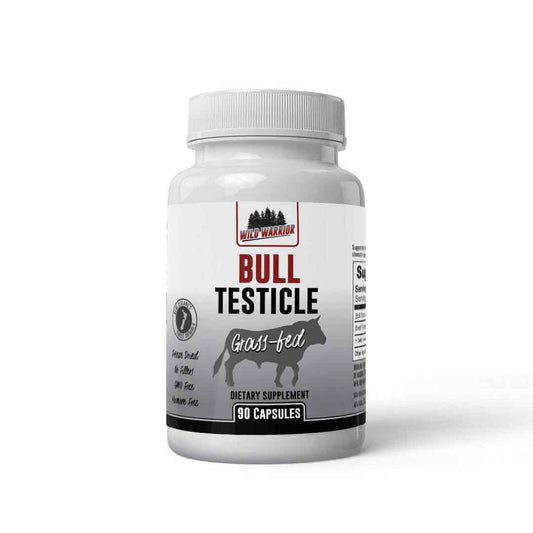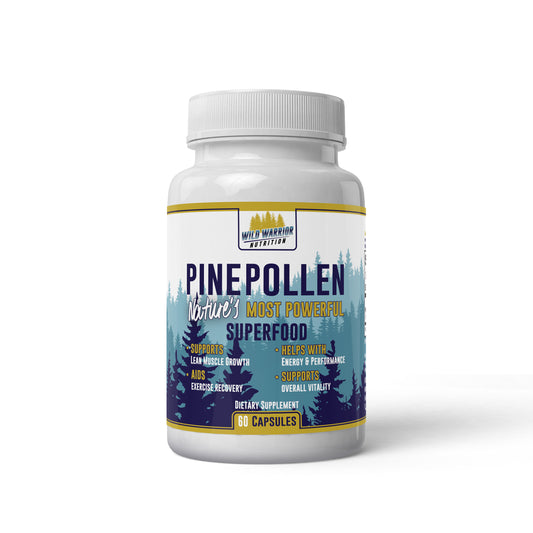Andropause, commonly referred to as "male menopause," is a term used to describe the age-related decline in testosterone levels experienced by many men. While not as widely discussed as female menopause, andropause is an important aspect of men's health that deserves attention and understanding. In this blog post, we will delve into the causes, symptoms, and treatment options for andropause, highlighting the importance of addressing this often-overlooked condition.
What is Andropause?
Andropause is characterized by a gradual decline in testosterone levels, which typically begins around the age of 30 and continues at a rate of approximately 1% per year1. This decline in testosterone can lead to various physical, emotional, and cognitive changes that may significantly impact a man's quality of life2.
Symptoms of Andropause
The symptoms of andropause can vary greatly among individuals but may include:
- Fatigue and decreased energy levels3
- Reduced muscle mass and strength4
- Increased body fat and weight gain5
- Decreased bone density, leading to an increased risk of osteoporosis6
- Reduced libido and erectile dysfunction7
- Mood changes, including depression, irritability, and anxiety8
- Sleep disturbances, such as insomnia or sleep apnea9
- Cognitive decline, including memory loss and difficulty concentrating10
Causes of Andropause
The primary cause of andropause is the natural decline in testosterone production that occurs with age11. However, other factors may contribute to or exacerbate the condition, including:
- Obesity12
- Chronic medical conditions, such as diabetes or cardiovascular disease13
- Lifestyle factors, including poor diet, lack of exercise, and excessive alcohol consumption14
Diagnosis and Treatment
Diagnosing andropause can be challenging, as many of its symptoms overlap with those of other medical conditions. A thorough evaluation by a healthcare professional, including a detailed medical history, physical examination, and blood tests to measure testosterone levels, is essential for an accurate diagnosis[15].
Treatment options for andropause may include:
- Testosterone replacement therapy (TRT), which involves supplementing the body's natural testosterone production through injections, gels, or patches[16].
- Lifestyle modifications, such as improving diet, increasing physical activity, and reducing stress[17].
- Medications to address specific symptoms, such as erectile dysfunction or depression[18].
It is important to consult with a healthcare professional to determine the most appropriate treatment plan based on individual needs and potential risks.
Conclusion
Andropause is a natural part of the aging process for many men, but its symptoms can significantly impact quality of life. By understanding the causes, symptoms, and treatment options for andropause, men can take proactive steps to maintain their overall health and well-being. If you suspect that you or a loved one may be experiencing andropause, consult with a healthcare professional for an accurate diagnosis and personalized treatment plan.
Footnotes
-
Harman, S. M., Metter, E. J., Tobin, J. D., Pearson, J., & Blackman, M. R. (2001). Longitudinal effects of aging on serum total and free testosterone levels in healthy men. The Journal of Clinical Endocrinology & Metabolism, 86(2), 724-731. https://doi.org/10.1210/jcem.86.2.7219
-
Lunenfeld, B., & Mskhalaya, G. (2013). Recommendations on the diagnosis, treatment, and monitoring of late-onset hypogonadism in men. The Aging Male, 16(4), 143-150. https://doi.org/10.3109/13685538.2013.814685
-
Penev, P. D. (2007). Association between sleep and morning testosterone levels in older men. Sleep, 30(4), 427-432. https://doi.org/10.1093/sleep/30.4.427
-
Storer, T. W., Basaria, S., Traustadottir, T., Harman, S. M., Pencina, K., Li, Z., Travison, T. G., Miciek, R., Tsitouras, P., Hally, K., Huang, G., & Bhasin, S. (2017). Effects of Testosterone Supplementation for 3 Years on Muscle Performance and Physical Function in Older Men. The Journals of Gerontology: Series A, 72(2), 149-155. https://doi.org/10.1093/gerona/glw237
-
Allan, C. A., & McLachlan, R. I. (2010). Androgens and obesity. Current Opinion in Endocrinology, Diabetes, and Obesity, 17(3), 224-232. https://doi.org/10.1097/MED.0b013e3283398ee2
-
Snyder, P. J., Peachey, H., Hannoush, P., Berlin, J. A., Loh, L., Holmes, J. H., Dlewati, A., Staley, J., Santanna, J., Kapoor, S. C., Attie, M. F., Haddad, J. G., & Strom, B. L. (1999). Effect of testosterone treatment on bone mineral density in men over 65 years of age. The Journal of Clinical Endocrinology & Metabolism, 84(6), 1966-1972. https://doi.org/10.1210/jcem.84.6.5807
-
Corona, G., Rastrelli, G., Morgentaler, A., Sforza, A., Mannucci, E., & Maggi, M. (2013). Meta-analysis of Results of Testosterone Therapy on Sexual Function Based on International Index of Erectile Function Scores. European Urology, 64(6), 821-832. https://doi.org/10.1016/j.eururo.2013.08.011
-
Zarrouf, F. A., Artz, S., Griffith, J., Sirbu, C., & Kommor, M. (2009). Testosterone and depression: Systematic review and meta-analysis. Journal of Psychiatric Practice, 15(4), 289-305. https://doi.org/10.1097/01.pra.0000358315.88931.fc
-
Barrett-Connor, E., Dam, T. T., Stone, K., Harrison, S. L., Redline, S., & Orwoll, E. (2008). The association of testosterone levels with overall sleep quality, sleep architecture, and sleep-disordered breathing. The Journal of Clinical Endocrinology & Metabolism, 93(7), 2602-2609. https://doi.org/10.1210/jc.2007-2622
-
Hogervorst, E., Combrinck, M., & Smith, A. D. (2003). Testosterone and gonadotropin levels in men with dementia. Neuro Endocrinology Letters, 24(3-4), 203-208.
-
Traish, A. M., Miner, M. M., Morgentaler, A., & Zitzmann, M. (2011). Testosterone deficiency. The American Journal of Medicine, 124(7), 578-587. https://doi.org/10.1016/j.amjmed.2010.12.027
-
Kapoor, D., Aldred, H., Clark, S., Channer, K. S., & Jones, T. H. (2007). Clinical and biochemical assessment of hypogonadism in men with type 2 diabetes: correlations with bioavailable testosterone and visceral adiposity. Diabetes Care, 30(4), 911-917. https://doi.org/10.2337/dc06-1426
-
Dhindsa, S., Ghanim, H., Batra, M., Kuhadiya, N. D., Abuaysheh, S., Sandhu, S., Green, K., Makdissi, A., Hejna, J., Chaudhuri, A., Punyanitya, M., & Dandona, P. (2016). Insulin resistance and inflammation in hypogonadotropic hypogonadism and their reduction after testosterone replacement in men with type 2 diabetes. Diabetes Care, 39(1), 82-91. https://doi.org/10.2337/dc15-1518
-
Mäkinen, J. I., Perheentupa, A., Irjala, K., Pöllänen, P., Mäkinen, J., Huhtaniemi, I., & Raitakari, O. T. (2008). Endogenous testosterone and serum lipids in middle-aged men. Atherosclerosis, 197(2), 688-693. https://doi.org/10.1016/j.atherosclerosis.2007.07





